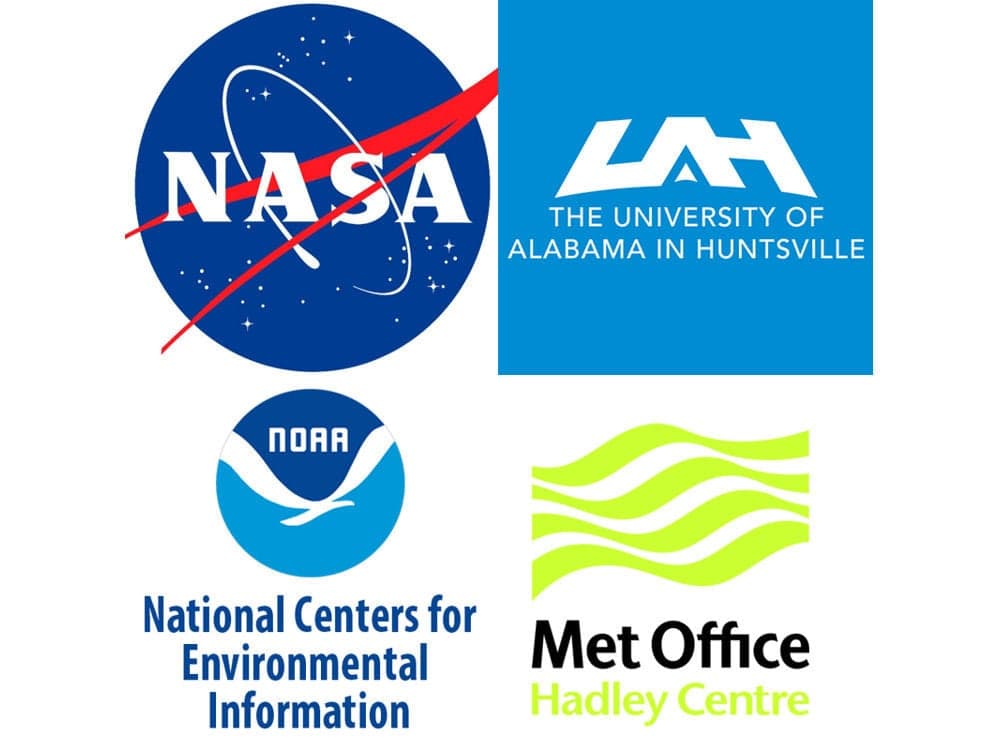NASA GISS and NCEI have released their June Climate anomalies; and, they are anomalous. GISS and NCEI both have access to all of the same near-surface temperature data; and, both use the same sea surface temperature anomaly product, ERSSTv4, developed by NCEI and frequently referred to as the “pause buster” reconstruction. Therefore, any difference between the NASA GISS and NCEI land plus ocean anomalies must be based on the near-surface temperatures.
In June, the GISS temperature anomaly declined by 0.14°C to 0.79°C, a decline of more than 0.5°C since its peak during the 2015/2016 El Nino in February 2016. However, the NCEI temperature anomaly increased by 0.02°C to 0.90°C, though still a decline of more than 0.3°C since its El Nino peak. Therefore, the two anomaly changes for the month of June vary by 0.16°C, or more than 20% of the residual GISS anomaly. Also, the declines in the two anomalies since the 2016 El Nino peak vary by 0.2°C. or approximately 40% of the decline in the GISS anomaly. These are very large differences for anomalies produced from the same dataset.
These differences highlight the significance of the subsets of the monthly near-surface temperature data selected for “adjustment”; and, the significance of the “adjustments” made to the data by the various producers of the near-surface temperature anomaly products.
The near-surface temperature anomaly product from the Hadley Center and the University of East Anglia Climate Research Unit Is not yet available for June, 2016. HadCRUT4 had decreased by approximately 0.4°C from its El Nino peak through May 2016, to 0.68°C.
The tropospheric temperature anomalies produced by the University of Alabama – Huntsville and by Remote Sensing Systems are produced from the data collected by the same satellite-based instruments. The changes in these anomalies are also notably anomalous for June, 2016. The UAH anomaly decreased by 0.21°C, to +0.34°C. The RSS anomaly decreased by 0.06°C, to +0.47°C. Therefore, the difference in the calculated anomaly changes between UAH and RSS is almost as large as the difference between the GISS and NCEI anomalies for June, 2016.
These anomalous anomalies suggest that reporting global temperature anomalies to two decimal place precision represents either inaccurate precision or precise inaccuracy.
